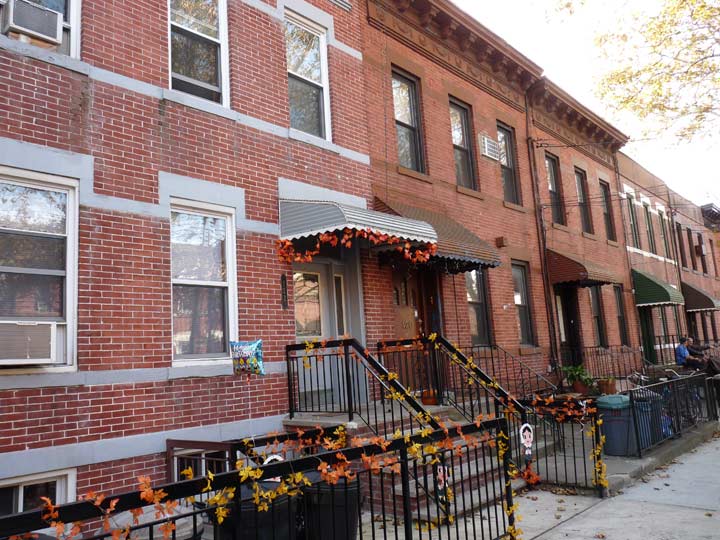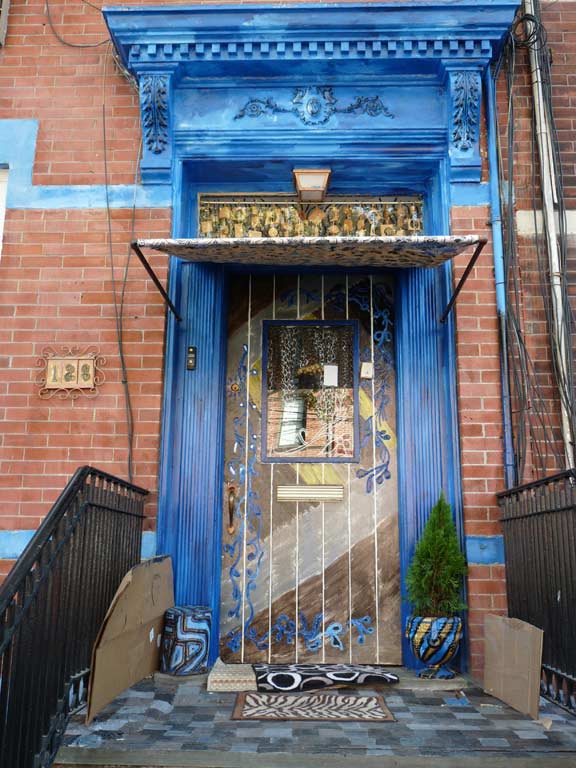
Beadel Street runs between Kingsland and Porter Avenues in the shadow of the construction of the new Kosciuszko Bridge and dangerously near the noxious and noisome Newtown Creek. No explanation is given anywhere I have looked for this name, but it reminds me of the word “beadle,” defined as “a ceremonial officer of a church, college, or similar institution.” In Charles Dickens’ Oliver Twist, the beadle, Mr. Bumble, gives Oliver his name. In response to learning that a husband bears legal responsibility for his wife’s actions, Mr. Bumble utters the celebrated line “If the law supposes that—the law is a ass.”
Mitch Waxman of Newtown Pentacle:
Moses Beadel was a Wallabout coffin ship patriot, his son and grand sons were also named Moses Beadel… They farmed, not so successfully, but got involved with the rendering game and became largish manufacturers (for the early 1900’s) of tallow for candles. Like all the old families, they had huge upland holdings.
His grand daughters married well, and carried deeds for most of the former “Arnheim” into the marriage as their dowry. The new in-laws were named Cooper, and that’s how Peter Cooper ended up owning the vast tracks of land on Furman Island, which is where the Cooper Houses are, which is where his factory was. Nearby, Martin Kalbfleisch had established a very large chemical factory nearby the modern corner of Vandervoort and Metropolitan not far from the south west side of the Met Avenue Bridge.
Cross Vandervoort on Beadel walking east, and you are in a Brooklyn oasis, given the relative desolation that otherwise surrounds. Beadel Street between Vandervoort and Porter Avenues is one block of the tidiest, neatest, well-maintained brownstone and brick buildings you could ever hope to see, a respite in this land of tractor trailers.

One Beadel Street resident, an individual called Valdemar (I met him one day, accompanied by Miss Heather of Newyorkshitty) takes special care of his brownstone unit, flamboyantly decorating it.
The Landmarks Preservation Commission has not seen fit to preserve these realms, so they could come under predation from the builders of apartments for the wealthy someday.
Check out the ForgottenBook, take a look at the gift shop, and as always, “comment…as you see fit.”
3/21/18

5 comments
I lived on this block for about a year in 2001 with my girlfriend while in college. We gathered with the neighbors to watch the controlled demolition of the Keyspan gas tanks in June (?) of that year, and I watched the towers fall from my stoop a few months later. That block truly was like a tiny oasis of residences. It was a solid 20 minute walk to the subway, and once you crossed Kingsland Ave, everything became heavily industrial. Many places had guard dogs that patrolled inside chain-link fences that would incessantly bark while I passed by. My personal favorite company had the name “Creative Tube Bending.” There was one restaurant that opened up nearby during my stint there- a decent Italian place, but folded by the end of the year. While the area near the Graham Ave stop has gotten more and more gentrified (I wish that rock club was there when I lived there- about 15 years too early), the streets closer to Beadel still have that gritty feel.
Your post prompted me to look at a Google Earth street view of this lovely block. It truly appears as an oasis surrounded by an industrial wasteland. The street trees even appear as almost a street canopy which only enhances the beauty of the residential architecture which at the same time appears uniform yet varied. I wonder when and by whom this block was developed.
Ah, yes…huge tracts of land.
Loved going trick or treating on that block as a kid…just real different than the rest of the neighborhood up that way!
Hello, I’m looking for a family relative of mine that lived at 133 Beadel Street back in the 30s, 40s and 50s. Just wondering if anyone knew them? The family name is Clancy. It is for a family history project which I’m currently doing. Thank you for your time.